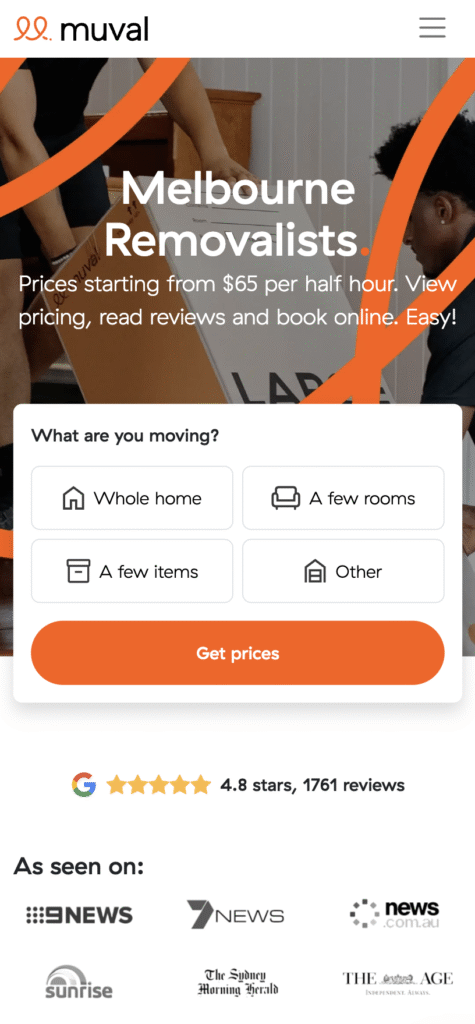If you’re running a trades business in Australia, your website is more than just a digital business card—it’s how you connect, show off your work, and give people the info they want fast.
The key to a successful tradie website lies in features that make it easy to use and trustworthy for visitors. These details help you stand out and pull in more clients, especially in a crowded market.
1) Clear Contact Information with Local Phone Number
Trades businesses need to make their contact information obvious and easy to find. Customers shouldn’t have to hunt for a phone number—it should be right there. A local number? That’s even better. It tells people you’re part of their community, not just some faceless company.
Put your contact details on every page, maybe in the header or footer so folks see it wherever they land. A click-to-call button is a lifesaver for mobile users—makes calling you almost effortless.


2) Mobile-Responsive Design for On-Site Work
Let’s be real: tradespeople are rarely at a desk. They’re out on job sites, and your website needs to work wherever they are. If your site isn’t mobile-friendly, you’re probably losing customers who get frustrated and just leave.
When your site adapts to phones and tablets, people can check services, grab your number, or book a job while standing in a muddy yard. That’s the kind of convenience people remember.
A mobile-responsive design means no more squinting at tiny text or wrestling with clunky menus. It just works, and that makes you look more professional. Plus, it shows you get how trades really work these days.

3) Online Booking System for Job Quotes
Adding an online booking system lets customers request quotes or book jobs whenever it suits them. No more waiting for office hours or playing phone tag.
These systems usually show your available times and let customers pick what works for them. It helps you stay organised and avoid double-booking headaches.
Automatic reminders? Even better. They cut down on no-shows and keep everyone in the loop. It’s a smoother process all around, and honestly, it makes you look sharp and on top of things.

4) Customer Testimonials from Australian Clients
Nothing builds trust like real feedback. Showcasing testimonials from local clients proves you deliver. It’s not just you saying you’re good—it’s your customers backing you up.
Put testimonials where people can actually see them. Adding names and suburbs makes them feel legit. If you can, throw in photos or quick video clips. People relate to faces, not just words.
And don’t shy away from sharing how you solved problems. That honesty goes a long way. Keep your testimonials fresh, too—no one wants to see reviews from five years ago.

5) Showcase of Recent Local Projects
Want to show you’re the real deal? Put up photos of recent local projects. People love seeing actual work, not just stock images or generic claims.
Short descriptions help—give a bit of context about the job, not just before-and-after shots. When you highlight local projects, it shows you know the area and local building quirks.
Keep this section updated so it doesn’t look stale. A tidy gallery or portfolio makes it easy for visitors to find work similar to what they need. That’s often what tips them toward calling you.
6) Trades Licence and Certification Display
If you don’t show your licences and certifications, people might wonder if you even have them. Put them front and centre. It shows you play by the rules and gives clients peace of mind.

Include licence numbers, expiry dates, maybe even photos of the certificates. That extra transparency sets you apart from competitors who skip this step.
If anything changes—like you renew or get a new certification—update your site fast. Clients (and regulators) notice these things.
7) Google Maps Integration for Service Areas
Ever had a customer ask, “Do you work in my suburb?” With Google Maps on your site, they can see your service area instantly. It’s a small thing, but it saves everyone time.
Maps help people find your address and get directions right from your site. If you cover multiple regions, you can show all of them clearly. It’s helpful and makes you look organised.
Updating your map as your service area grows or shifts is easy, too. It keeps your info current without much hassle.
8) Transparent Pricing or Estimate Calculator
People hate surprises when it comes to cost. If you can, show clear pricing or offer an estimate calculator right on your website. Let customers plug in their details and get a ballpark figure.
This honesty builds trust and helps people decide faster. It also weeds out folks who aren’t serious, saving you time. When you’re upfront about pricing, you set yourself apart from businesses that hide behind “call for a quote.”
Clear pricing also means fewer disputes later. Everyone knows what to expect, and that usually leads to happier clients and better reviews down the line.
Maximising Visibility for Trades Businesses
If you want more local clients, you need to show up in local searches and look trustworthy. Local SEO and real reviews can make a big difference.
Optimising for Local Search in Australia
Trades businesses chasing local work should mention their suburb, city, and state on their website, especially in meta titles and descriptions.
Set up a Google Business Profile and keep it updated. Google Maps and local search results pull info from there, so make sure your hours and contact details are always right.
Don’t forget to use Aussie terms and local keywords. Stuff like “electrician in Brisbane” or “Melbourne plumber” helps you get found by the right people.
Using Customer Testimonials and Reviews
Happy clients are your best marketers. Ask for testimonials and show them off. Star ratings and specific quotes about local jobs make your reviews more relatable.
Reply to reviews—good or bad. It shows you care and handle feedback like a pro. People notice that kind of thing and it can tip the scales in your favour.
Frequently Asked Questions
The right website features can help you connect with clients, show off your work, and make bookings a breeze. Local phone numbers, mobile-friendly design, online quotes, client reviews, and fresh project photos all help build trust.
What are the essential elements for a tradesperson’s website to effectively attract clients?
You need a local phone number that’s easy to spot, plus contact info on every page. The site should work great on phones—most tradespeople and clients are on the move. Show off testimonials and recent local projects to build credibility. An online booking or quote system makes it simple for clients to reach out.
How can I integrate e-commerce capabilities into my trades business website?
Try platforms like Shopify or WooCommerce to add e-commerce. You can sell materials, tools, or even service packages online. Make sure checkout is secure and simple. And don’t forget—keep the site fast and mobile-friendly for everyone.
What considerations should I keep in mind when setting up an online store for my trades services?
Keep an eye on stock so you don’t sell out-of-stock items. Write clear descriptions and show prices for everything. Be upfront about shipping and delivery. Make returns easy and list customer service contact info in case buyers have questions.
What template structure should I follow to develop a business plan for my trades website?
Start with an executive summary that covers your goals and target market. List the website features you’ll need, like booking or e-commerce. Include a marketing plan focused on local search and client communication. Wrap up with financial projections based on bookings or sales from the site.
Which domain registration services are best suited for Australian tradies?
Look at registrars like Crazy Domains, GoDaddy Australia, or VentraIP for .com.au domains. They offer local support and help with Aussie business verification. A local domain can also help your search rankings here in Australia.
How can I implement professional email addresses using my business domain?
Most domain registrars throw in email hosting when you buy a domain. You can set up emails like name@yourbusiness.com.au with services such as Microsoft 365 or Google Workspace. Honestly, having a professional email just feels right—it helps you look legit and keeps your inbox from turning into a mess.




















